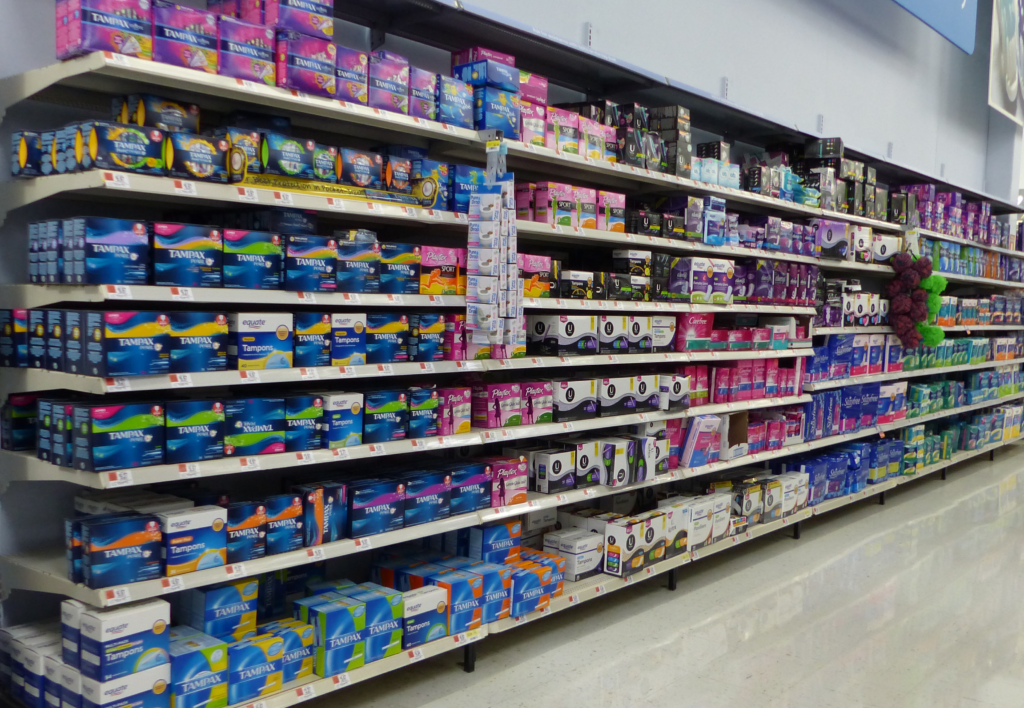Earlier this month, Scotland became the first country to tackle “period poverty” head on by offering free period products for all students – and for once, America needs to take some notes.
Alleen Campbell, the Scottish Cabinet Secretary for Communities and Local Government, announced that the $6.4 million investment will provide the “essential products” to more than 395,000 students so that they can fully focus on their studies.
As a college student, budgeting out my expenses is an essential strategy that I try to manage every month in order to not overspend. From tampons, pads and panty liners, the list goes on with the various feminine hygiene products I must set aside money for when that time of the month comes.
An average box of quality tampons ranges from seven to 10 dollars, and a woman typically uses more than 16,000 tampons in her life, according to the Girls Helping Girls Period (GHGP) organization.
In the United States, food stamps do not cover the cost of feminine hygiene products, and for organizations such as GHGP, the mission is to help any girl get free access to these products. Surveys from the organization have shown that some women have gone as far as giving up their food stamps in exchange for money to purchase products that the government has considered a luxury over a necessity.
Infamously known as the “pink tax,” women on average spend over $1,351 every year just for being a woman. The pink tax allows for products such as pads and tampons to be charged an additional sales tax on top of its ridiculous price because producers continue to believe that female hygiene products are a “luxury.”
In reality, any consumer of these products would tell you that PMSing and having a monthly menstrual cycle for over 40 years of one’s life is far from a luxury.
Since tampons can be used improperly and cause health issues such as Toxic Shock Syndrome, which can lead to death, for many years the Food & Drug Administration believed it to be a non-essential product for women. This belief has continued to exist even after the FDA finally proposed products similar to tampons as “medical devices” and no longer “cosmetics.”
With 20 percent of women holding positions in the U.S. Congress, it is no wonder that America is determined to end taxes on feminine hygiene products.
The new argument should go beyond cutting a couple of bucks off these products, but instead cutting the cost overall.
In 2018, the U.S. is expected to make over $2.7 million in revenue from the feminine hygiene product industry. Giving women the human right to have appropriate sanitary practices should be more valuable than losing any amount of money.
Recent studies have shown that when young girls and women can not afford to buy proper hygiene products, they begin to use unsanitary practices, such as rags or old socks as pads, which can lead to significant health risks like HPV and incontinence.
In university bathrooms, students are not even offered free pads or tampons in case an emergency comes up in the middle of the school day. Students, including myself, have struggled with embarrassment in finding alternatives when menstruation creeps up on us when we least expect it because the accessibility that we rightfully deserve for free feminine hygiene products does not exist.
The inability to afford these necessary products cause physical health issues, and can also lower a woman’s or girl’s self-confidence. Students would prefer to miss school than deal with the embarrassment of leaking during school hours.
With the pink tax still around, male products such as condoms and viagra continue to be sold without sales taxes, yet female hygiene products continue to be taxed in 41 states, including California. The US must follow in the footsteps of Scotland and combat period poverty once and for all because menstruation is biological, not a choice, for women.











Peter Kilvert • Sep 27, 2018 at 1:37 am
Hello Jailene, Thank you for your article and I wish you success. Just one point that I would like to bring to your attention, you say “tampons can be used improperly and cause health issues such as Toxic Shock Syndrome.” I have to inform you that Toxic Shock is NOT caused by the improper use of tampons. Toxic Shock happens because all main brand tampons contain RAYON, a highly absorbent material. It is the RAYON in the tampon that reacts with bacteria (usually Staphylococcus aureus), that produces the toxin TSST-1, that gets into the blood, stimulates the body’s defence system, and damages organs. TSS is NOT caused by improper use such as leaving a tampon in too long or even poor hygiene (although obviously changing tampons as per instructions and washing hands are recommended). There has never been a case of TSS when using ALL-COTTON tampons.